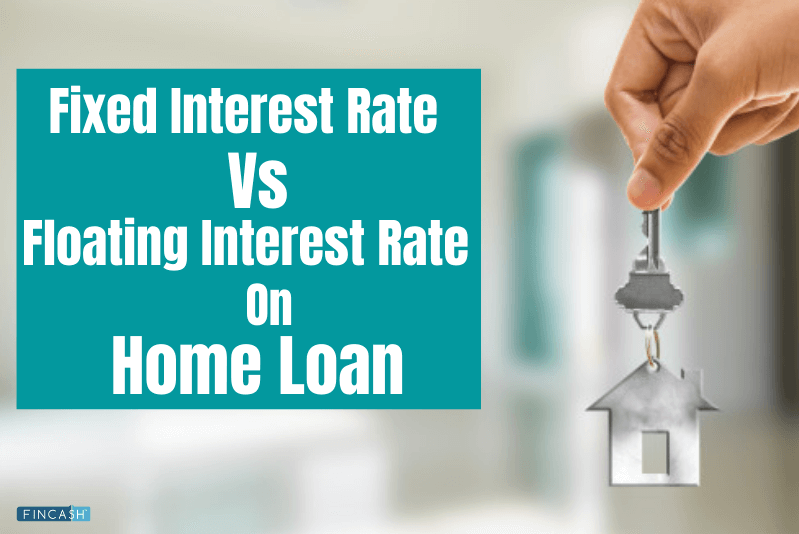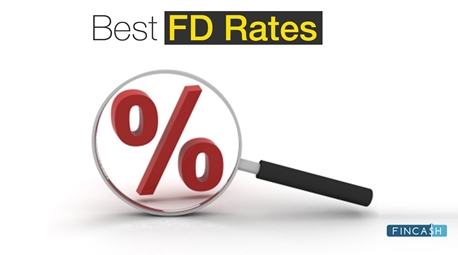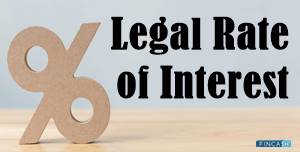
Table of Contents
What is Fixed Interest Rate?
A Fixed Interest Rate refers to a rate that does not change over time and is applied to liability such as a loan or mortgage. It could be used for the entire loan term or just a portion of it, but it stays the same for a specified time.

Multiple interest-rate options are available for mortgages, including combining a fixed rate for part of the term with an adjustable-rate for the remainder. 'Hybrids' are the term for this.
How does a Fixed Interest Rate Work?
A fixed interest rate loan means you'll only have to pay a certain amount of interest for a specific period, like a year, a month, etc. Variable credit is the polar opposite of this. Fixed interest rate loans are available for the following types of loans:
- Student loans
- Mortgages
- Auto loans
- Home equity loans
- credit cards
Interest is applied to the amount borrowed with a fixed interest rate (the principal amount). Thus, each payment covers both the interest and a portion of the principal owed.
Banks and lenders are required to inform you of the interest rate you will be charged. Keep in mind that the Bank has the right to adjust the interest rate at any moment, although this should be noted in the fine print. You might be provided with a breakdown of your payments over the defined period so you can understand how much you'll be paying each month.
Talk to our investment specialist
How to Calculate Fixed Interest Rates?
(Interest Rate / Number of Payments) x Loan Principle = Interest
Let's take up a fixed interest rate example here. So, suppose you borrow 40,000 INR for 10 years with an interest rate of 5% yearly (12 payments in a year), then the interest payable for you is:
(0.05/12) * 40,000 = 166.66 INR
Advantages and Disadvantages of Fixed Interest Rates
Comparing the benefits and drawbacks of different loan products might help you decide whether to go with a fixed-rate or variable-rate loan.
Advantages
Predictability: Fixed interest rate ensures that your monthly loan payments remain consistent from month to month
Low-interest rates: A fixed interest rate loan product can be more appealing when interest rates are low or near historic lows
Make a cost estimate: Because the interest rate on a loan or line of credit is constant, it's easier to compute the total cost of borrowing over time
Disadvantages
Rates are higher than adjustable ones: A fixed-rate loan may have a higher interest rate than an adjustable-rate loan, depending on the overall interest rate situation
Rates are falling: If interest rates fall, you may be stuck into a higher rate, whereas a variable rate loan would stay up with the benchmark rate
Refinancing: When interest rates fall, refinancing from one fixed-rate loan to another or a variable-rate loan can save money, but it can be time-consuming and costly
Fixed rates are usually more expensive than variable rates. However, when interest rates are high, adjustable or variable-rate loans offer lower introductory rates than fixed-rate ones, making them more tempting.
During periods of low interest rates, borrowers are more inclined to choose fixed interest rates when locking in an exceptionally favourable rate. If interest rates fall, the Opportunity Cost is still substantially lower than during periods of high interest rates.
Conclusion
The interest rate affects how much you'll have to pay back each month. People who require the stability of a constant price may benefit from a fixed interest rate. A variable rate may be better suitable for people who are willing to risk paying more in the hope of paying less in the end. Interest rates are one of the most important aspects to consider when seeking any type of loan. If you want to control your company's outgoings tightly, a fixed interest rate can assist in eliminating any uncertainty.
All efforts have been made to ensure the information provided here is accurate. However, no guarantees are made regarding correctness of data. Please verify with scheme information document before making any investment.












